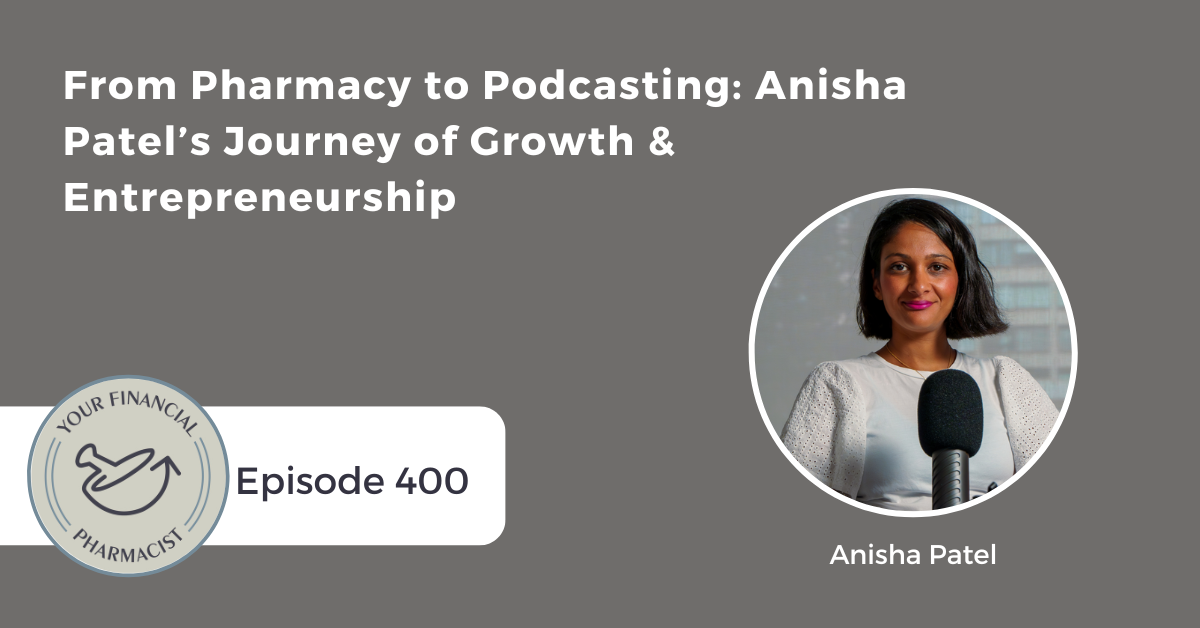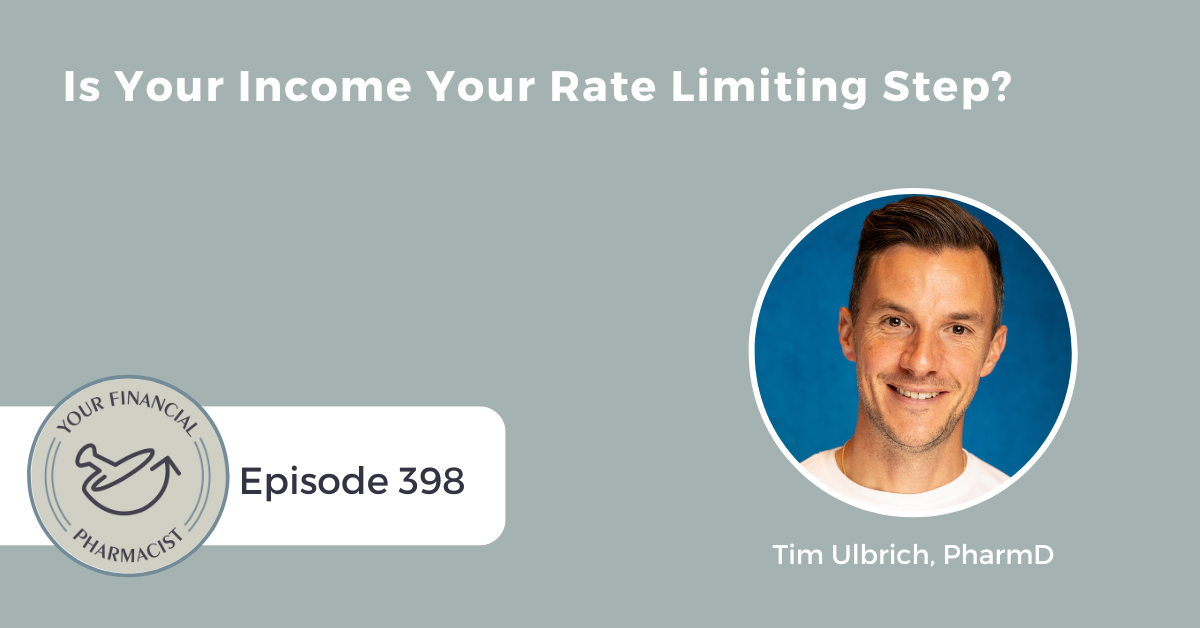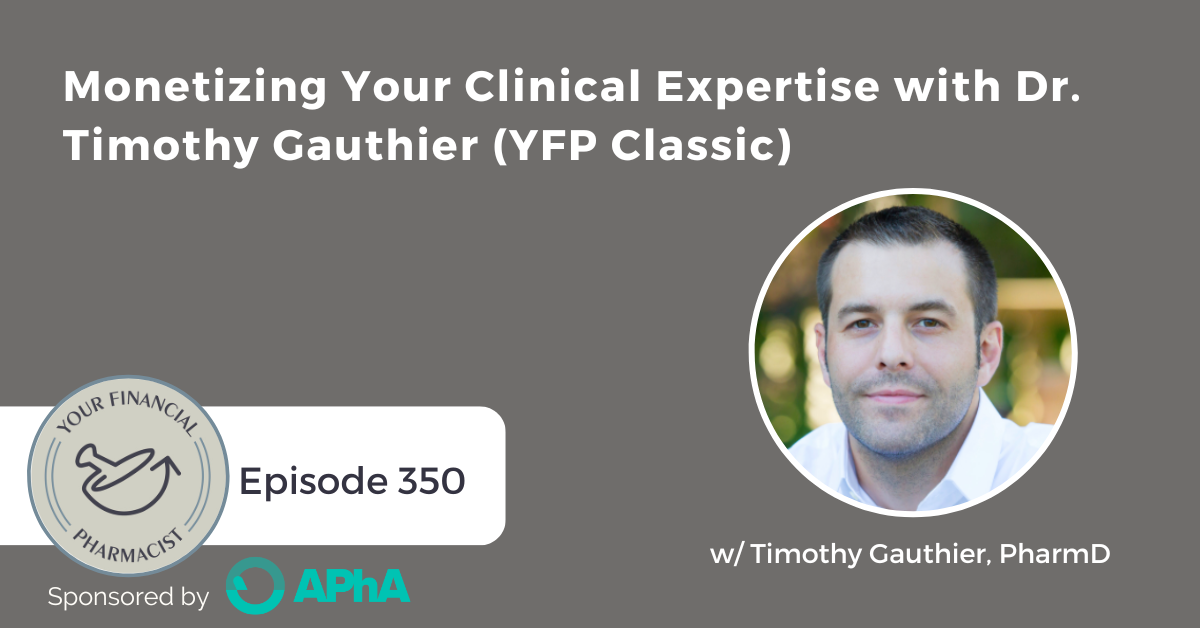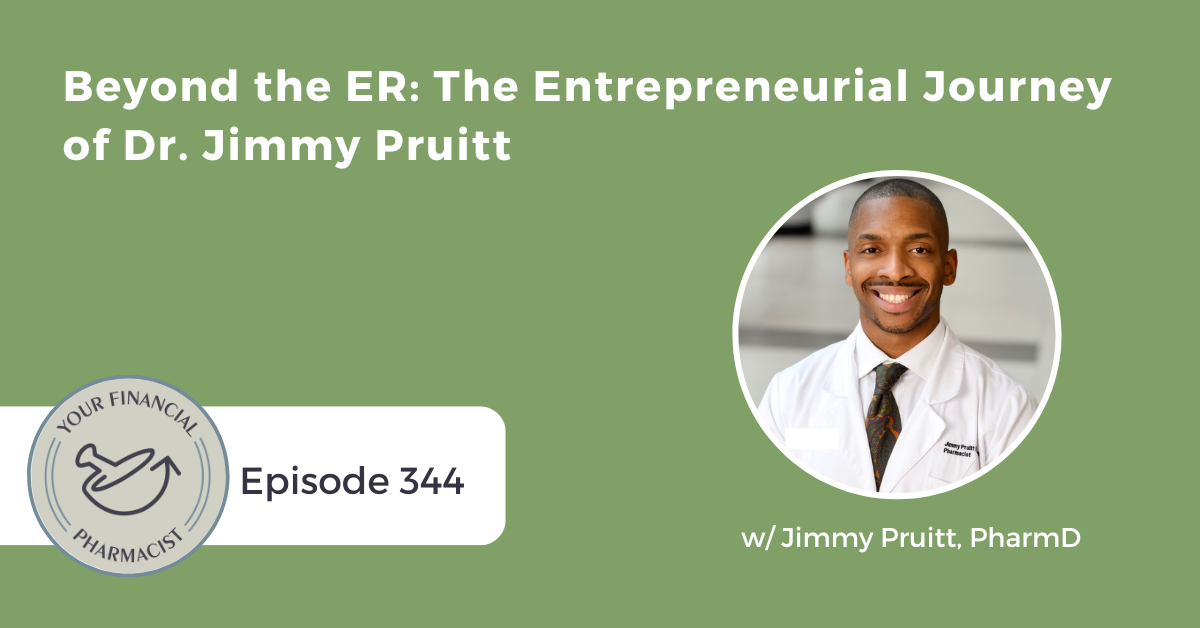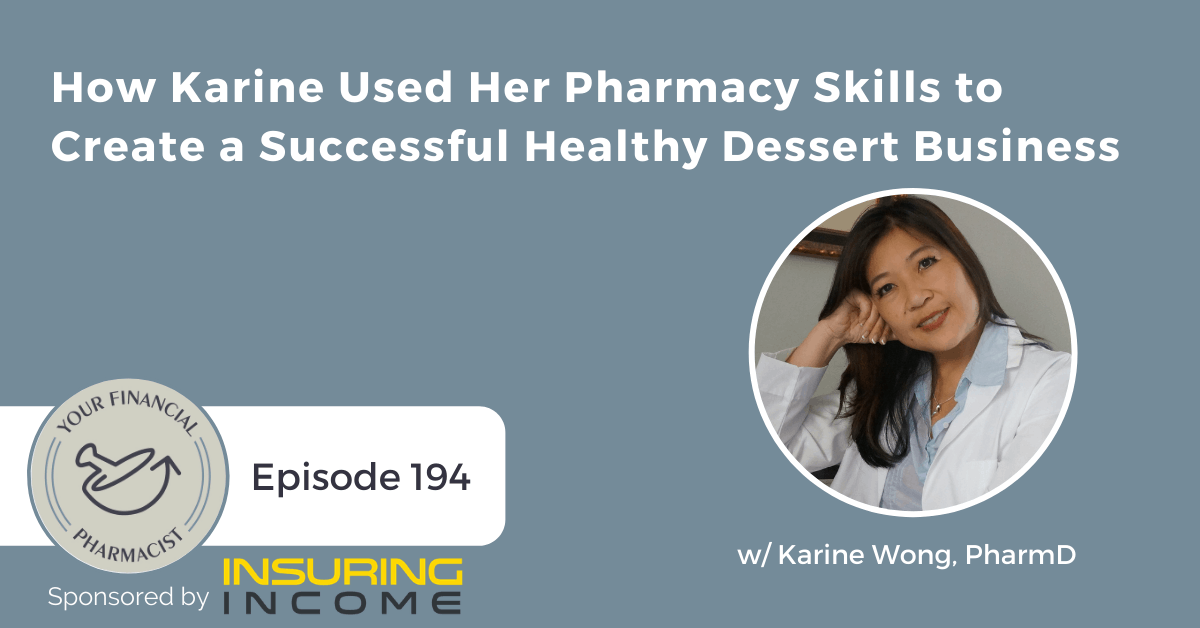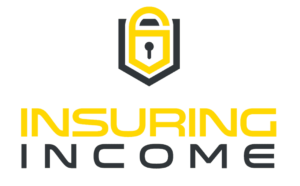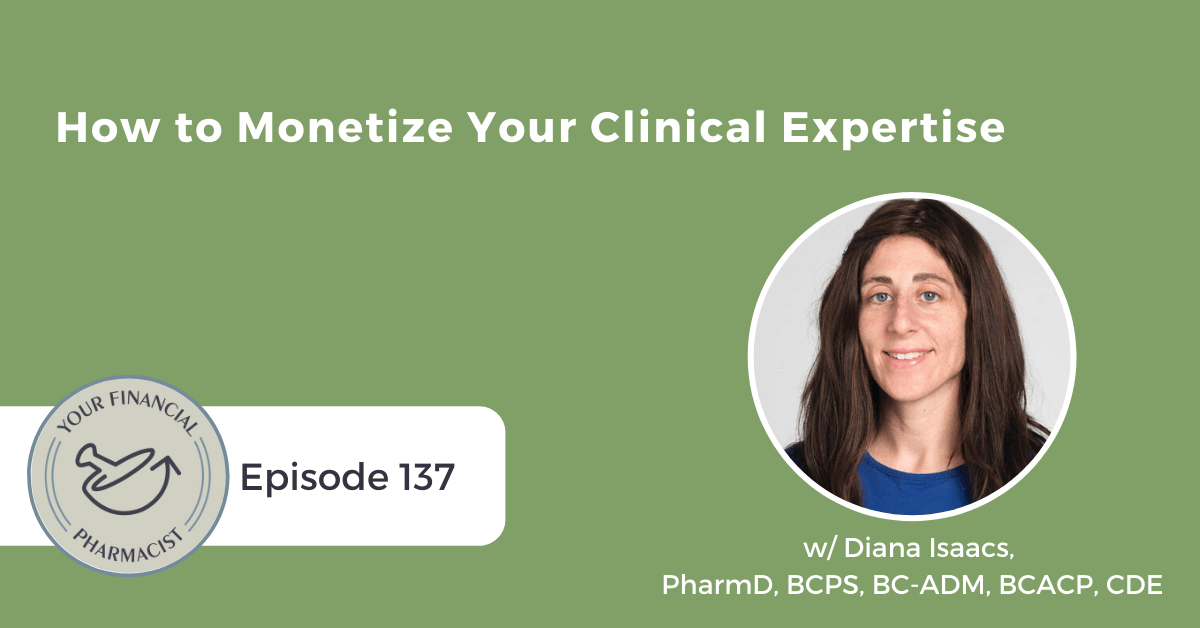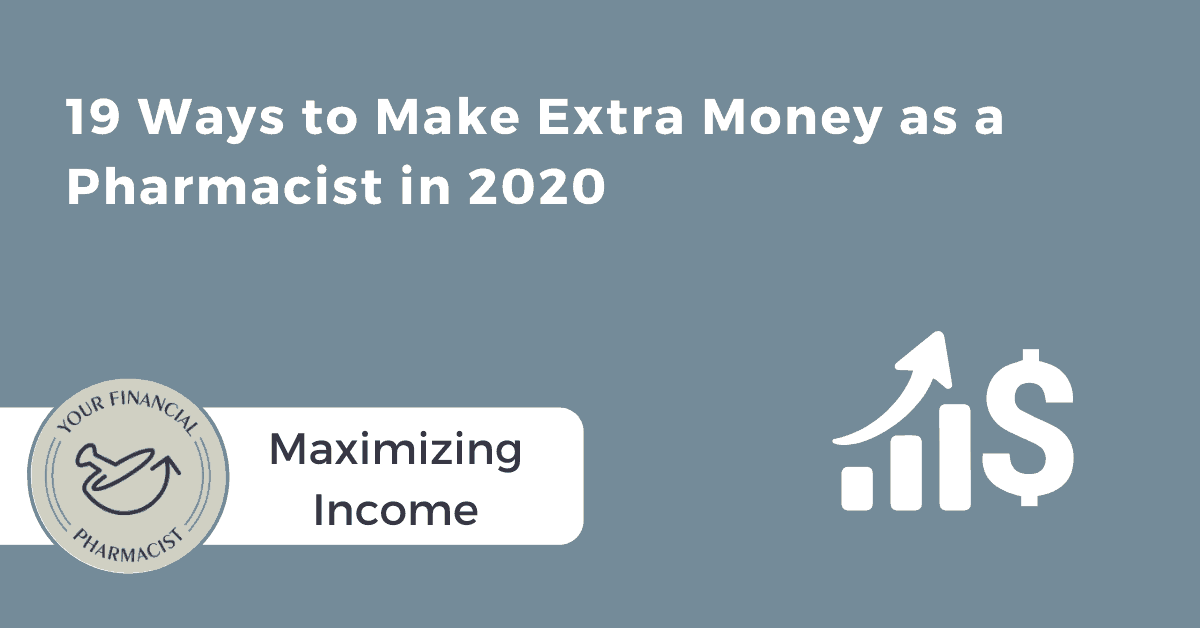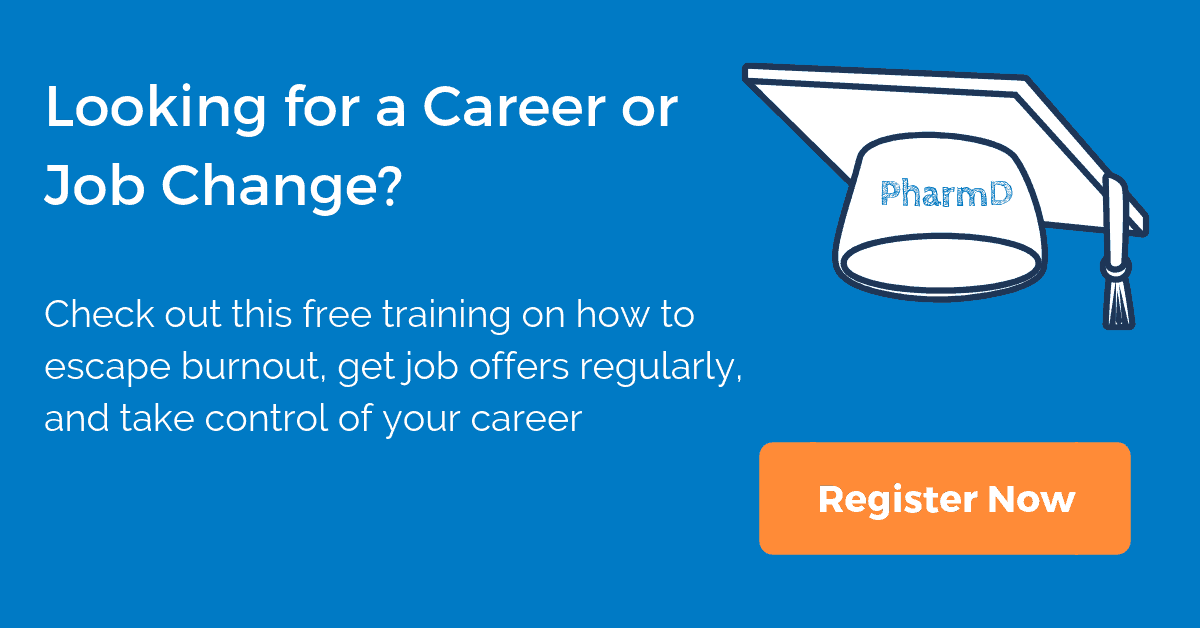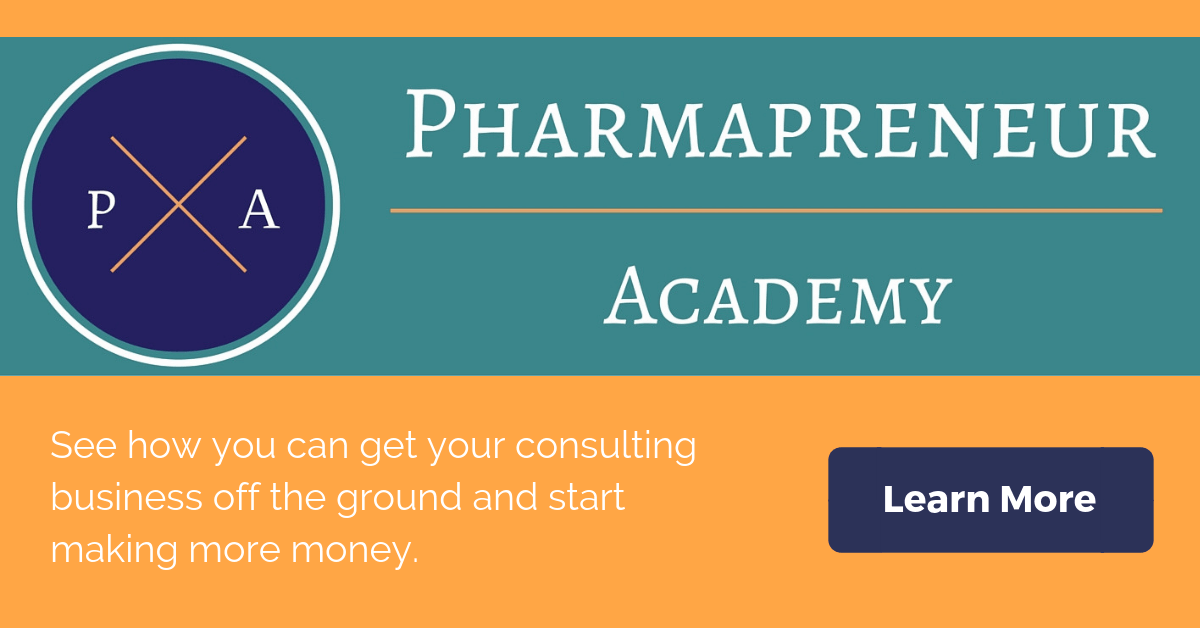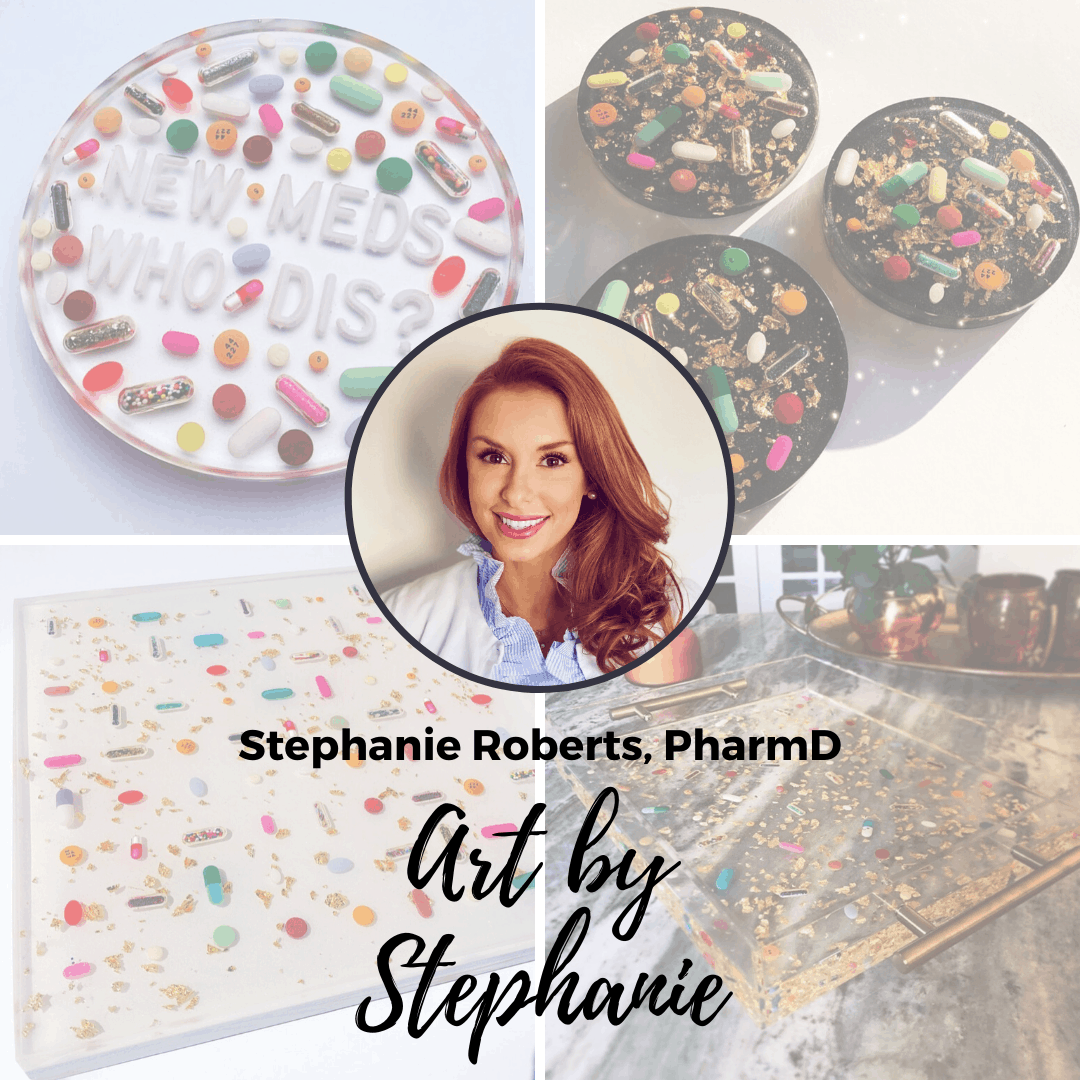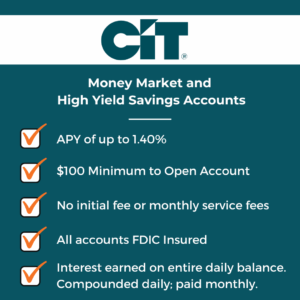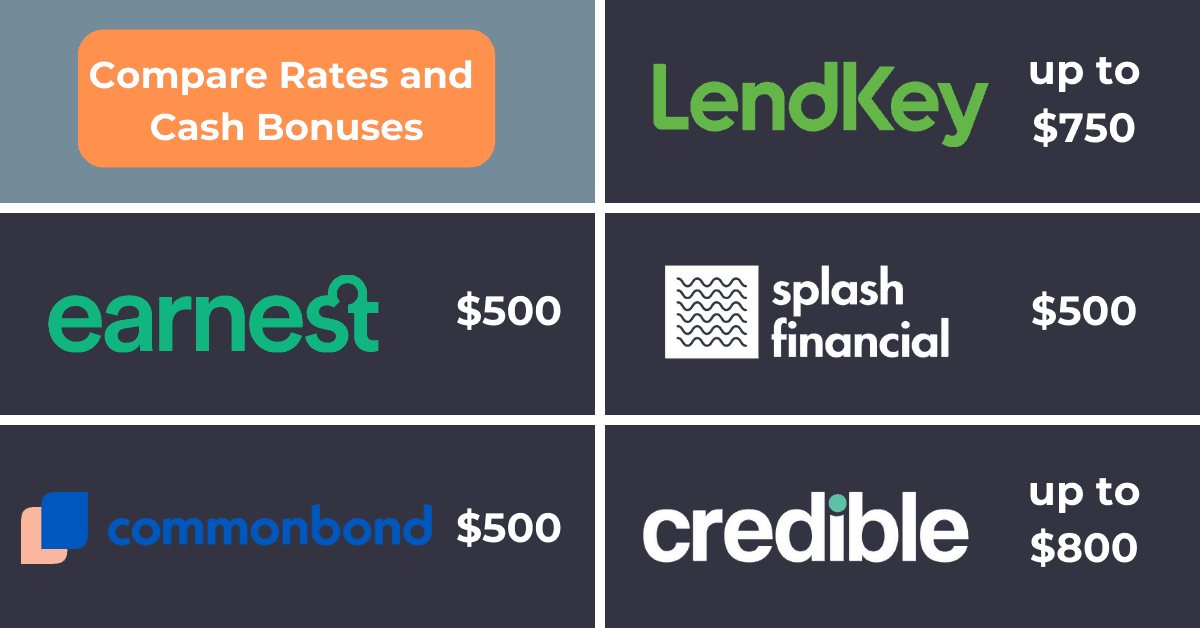In this episode, Tim Ulbrich chats with Anisha Patel, host of the Pharmacist Diaries podcast, about her journey through pharmacy, entrepreneurship, and personal growth, including her work at Oxford and Cleveland Clinic Abu Dhabi, and how launching her podcast during the pandemic opened new opportunities.
Episode Summary
In this episode, Tim Ulbrich, YFP Co-Founder, is joined by Anisha Patel, host of the Pharmacist Diaries podcast, to discuss her inspiring journey through pharmacy, entrepreneurship, and personal growth.
Anisha’s story spans from growing up in a family of independent pharmacists in the UK to working at Oxford University Hospitals and Cleveland Clinic Abu Dhabi. She also shares how she launched her podcast during the pandemic, which has since grown into a global platform. In this conversation, Tim and Anisha dive into the power of storytelling in healthcare, the intersection of entrepreneurship and pharmacy, and how embracing non-traditional career paths can open doors to new opportunities.
About Today’s Guest
Anisha Patel is a paediatric pharmacist turned podcaster and digital creator who’s passionate about showcasing the limitless possibilities within healthcare careers. Through her podcast “The Pharmacist Diaries” (174+ episodes strong!), she shares stories of innovative pharmacists worldwide while building a community that breaks free from traditional career moulds.
After 14 years in clinical practice, including stints as the Abu Dhabi Grand Prix pharmacist and working in emergency services in the UAE, Anisha has embraced entrepreneurship to help other healthcare professionals find their voice through podcasting. When she’s not recording episodes or coaching aspiring podcasters, Anisha is planning global adventures with her family or sharing insights about designing a life of impact and freedom.
Key Points from the Episode
- [00:00] Welcome Back, Anisha Patel!
- [00:24] Choosing Pharmacy: A Family Influence
- [01:10] Cultural Expectations and Independence
- [02:48] Educational Journey: From Virginia to the UK
- [03:37] Confusion and Self-Discovery
- [05:27] Retail Pharmacy: A Community Connection
- [07:47] Falling in Love with Hospital Pharmacy
- [08:24] Residency at Oxford: A Transformative Experience
- [08:48] Night Shifts and Rotations
- [12:19] Meeting Sunjay and Moving to Dubai
- [19:12] Adventures in Dubai: Changing Laws and Building Pharmacies
- [21:25] Returning to the UK: Balancing Work and Family
- [23:24] Discovering a Passion for Pediatrics
- [27:51] Starting the Pharmacist Diaries Podcast
- [33:05] The Podcast Journey Begins
- [33:47] Building Connections and Expanding Reach
- [34:23] The Impact of Podcasting
- [41:04] Mentorship and Coaching
- [50:41] Balancing Work and Passion
- [58:35] Future Aspirations and Vision
- [01:05:05] Conclusion and Contact Information
Episode Highlights
“The connections that I make with people are genuine friendships and their lifelong friendships. And the reason why is because my podcast is not a traditional pharmacy podcast.” – Anisha Patel [36:45]
“As an employee, I’ve been controlled for the last 14 years and I just thought this is normal life, right? But now I’ve been exposed to doing things my own way, working in the style that I like, the time that I want, making the connections with people in, you know, a non-scripted way has just given me this spark of, “Wow, I can do so much more with this.” – Anisha Patel [38:28]
“ I now realize that there is this sort of vision that I could live anywhere in the world. I could have a digital business where I could educate, mentor, and support pharmacists or healthcare professionals to start a podcast and become a thought leader on a global scale.” – Anisha Patel [43:41]
“ One thing that I would say about Pharmacist Diaries that I’ve discovered in this journey is that it’s pure passion and I don’t want that to go away because I’ve realized when you fall in love with something, it never feels like work.” – Anisha Patel [59:22]
Links Mentioned in Today’s Episode
- Pharmacist Diaries
- Email: [email protected]
- Anisha Patel LinkedIn
- Pharmacist Diaries Instagram
- Pharmacist Diaries Facebook
- YFP YouTube Channel
- YFP Book a Discovery Call
- YFP Disclaimer
- Subscribe to the YFP Newsletter
- Tim Ulbrich on LinkedIn
- YFP on Instagram
- YFP Facebook Group
Episode Transcript
Tim Ulbrich: Anisha, welcome to the show.
Anisha Patel: Oh my goodness, it’s round two. I’m so happy to be back.
Tim Ulbrich: Well, it’s been a long time in the making and, uh, you and I have had a chance to connect, uh, and get to know each other a little bit better over the last couple of years, and I am thrilled to have you on the podcast and excited to talk, uh, career journey, entrepreneurship, family, life, who knows where the conversation will go.
So, uh, let, let’s start with the career journey in pharmacy. What led you To choose pharmacy as a profession. Mm hmm.
Anisha Patel: My parents owned a pharmacy when I was growing up. They’re not pharmacists. My dad’s an accountant, but they both owned a chain of pharmacies, independent pharmacies here in the UK. So they owned it [00:01:00] from a business perspective, had two or three pharmacies. I grew up. Working in the pharmacy, doing stock, like doing the old school, like price tags, um, yeah, filling shelves.
So I was, I was exposed to a community pharmacy environment from a very young age and being from an Asian background. Education was really important growing up, and I would say that we were very encouraged to go down a professional route. So whether that was medicine, pharmacy, lawyer, engineer, etc. Um, there was an expectation to go to university or college and, um.
Not only from the point of view of having a professional degree and a professional career, but also my dad always encouraged me as a female to think about being independent and not necessarily relying on my [00:02:00] potential future husband for income and salary. And one of the things that he talked about with pharmacy, because he was obviously exposed to the environment.
Being an owner was that he saw what locums were doing or what we call as UK or PRN pharmacists and how a lot of them were female and a lot of them were mothers who came kind of like chopped in and out of the career as and when they kind of had children and family life and. Knowing that the career was always going to be there for you when you return from say a maternity leave or if you want to take time out for two to three years while whilst you have young children in the house and then coming back to pharmacy that was always available even you know 25 30 years ago plus the fact that you earn a really good Salary, you’re well respected in the community.
It’s a professional degree. You learn so much and you’ve got all this [00:03:00] expertise. So I did really well in science. I actually moved to Virginia as a high school student, and then I did my first degree at Virginia Tech in biology and chemistry.
Tim Ulbrich: didn’t know that. All right. Yeah.
Anisha Patel: I did. That element of kind of us life. I totally understand how the undergraduate degree works there, but I missed London and I missed home a lot.
And I lived there for nine years and I made the decision to come back to the UK to do pharmacy afterwards.
Tim Ulbrich: Did you think going in that you were going to own your own pharmacy? Given, given the background, you mentioned your father owning pharmacies as a, as a non pharmacist, which I think is really interesting because there’s the entrepreneurial thread there that we’ll come back to here in a little bit. But did you anticipate going into pharmacy training that you were going to own pharmacies?
Anisha Patel: No, I, if I’m completely honest about my pharmacy degree as a choice, when I was in [00:04:00] my early 20s, I was quite confused about maybe, if I reflect back, I was confused about who I was. I’d moved countries quite a few times. I would have to Build relationships in new places. Living in London when I was growing up, I was private school educated.
It’s an all girls school. And then going into like Richmond, Virginia, where I’m exposed to a mixed environment, like no school uniform. Um, a very different way of living, you know, as exposed to high school parties and drinking at an early age. And it was just really different. And I think I got really confused about who I was and what I wanted to be.
And I was so focused on trying to fit in. I genuinely, I, I changed my accent. I got an American accent cause I got really frustrated with people maybe picking on me or exposing me for being different. They didn’t [00:05:00] understand that I had sort of, um, darker colored skin, but I’m from England. They didn’t really know what England was 1990s.
A lot of people who I went to school with didn’t have a passport and weren’t well traveled. So they, they were like, okay, well, what do you mean you’re Indian? But you’re from England, is American Indian, you know, so it was, you know, I was confused and going into my first degree, I felt like I was following an expectation from my family. And because I was good at science, it just kind of pharmacy just kind of fell into my lap. And When I started pharmacy school here in the UK, I worked in a retail pharmacy as, um, a student every single weekend and it was an independent pharmacy and I actually genuinely loved retail and the pharmacy that I was exposed to, it was such an amazing family environment.
You got to know the [00:06:00] customers and that time that I spent in the U S really helped me to build my confidence, go up to anybody and speak to anybody. Cause it’s completely different to the UK. You would find that people in England are quite reserved in comparison to the U S. Like even if you go to, I don’t know, Abercrombie or any clothing store.
Someone will say hi to you. Someone will approach you. Someone will ask you if you need any help. Someone will check whether or not you need support with buying and purchasing clothes while in England, no one, like no one would really speak to you’d walk into a store. And if someone approached you, you’d be like, mind your own business.
Like, why are you speaking to me? And so the, the lifestyle and my personality shifted and. I became really kind of extroverted from having to make new friends and live in this new environment and figure out who I was. So when I worked in retail, it was so nice to be able to get to know the community and [00:07:00] know everyone’s kind of family members, what medications they were on, how many children they had.
When people’s birthdays were and they’d come to the pharmacy to actually purchase like perfumes and, and different products and things like that. So that exposure that I had to retail pharmacy was also similar to what kind of pharmacy my dad owned. If I walked to the pharmacy from the car park to my dad’s store, which is about a three minute walk, we would be stopped about 15 to 20 times because everyone in the town knew my dad and everyone would just come into the pharmacy just to speak to him, say hi to him.
He was literally the heart of the community. And I remember this growing up and working in that retail pharmacy also then brought back some of those memories. So I did have a love for pharmacy, but I also didn’t just want to work in retail. I discovered that I really enjoyed the clinical aspect of pharmacy and patient education was a massive part of something that I really enjoyed.
[00:08:00] And I exposed myself to the hospital environment during Sort of hospital placements, um, during the university setting. And then when you do your kind of intern year, I chose hospital as my full year of internship. And I fell in love with it and I thought that’s it. I’m doing hospital pharmacy. There’s no turning back.
I’m going to be employed within the national health service, which is our government kind of hospital facilities. Like this is it I’m choosing my, my role and I loved it. And I just fell in love with it. And I thought that was what I was going to do forever.
Tim Ulbrich: So, let’s talk about that interest in, in clinical practice, clinical setting. You would end up doing a residency at Oxford University Hospitals, three year experience as I understand it, correct? Very different from our experiences here, uh, in the United States, as many of our listeners will know. So I’m curious about that experience and yes, the clinical aspect of it, but I’m, I’m more curious about how did that three year experience shape you as an individual, personally and [00:09:00] professionally?
Anisha Patel: so how the three year experience works in a residency here is, um, it’s usually the larger sort of teaching hospitals that have a residency service because they have a requirement for night shifts and support from pharmacy because it’s extremely busy. And at the time I worked there, we were covering around, I think, 1600 patients across four hospitals within Oxford.
And. Night shifts would include starting at 4 p. m. in the evening and you would finish at 8 a. m. in the morning. And between those hours, you would probably receive about 150 bleeps in that time. So it’s, it’s pretty busy. From 4 p. m. till 8 p. m. you have support from other members of the pharmacy team. And then from 8 p.
- till 8 a. m. you are on your own. And most of us stayed on site, um, just because it was [00:10:00] easier. You had to live within a 10 minute distance of the hospital if you did choose to go home, because you would just need to come back, back in maybe for, for controlled drugs or emergencies or anything really. So most of us would stay on site and they would give us a room as well.
If we needed to just rest in between doing the work. And we would do that for sort of four nights in a row and then have three days off.
Tim Ulbrich: Wow.
Anisha Patel: Every three months we would rotate to a new clinical area. So in the first kind of year, it’s a lot of general medicine, general surgery. And then from year two, you would start going into the more specialist areas.
So pediatrics, maybe clinical trials, kind of the aseptics area, medicines information, um. The more complex surgery areas like upper GI, lower GI. I did infectious diseases. I did CF. I got exposed. Anything and everything because of the way this [00:11:00] hospital had access to everything. And you work with these incredible pharmacists with, you know, 15, 20, 25 years of experience in that area of expertise.
So you have these role models all around you, just inspiring you left, right, and center. And one of the best things about doing this residency is you get the exposure that you want to learn, which area of expertise you want to go into. You also get exposed to a ward environment. So the pharmacotherapy team, you get exposed to clinics and pharmacists can now prescribe in the UK.
So you’ve got these pharmacists who are running clinics like physicians. They’re able to physically assess, use a stethoscope, like palpate, percuss, order blood tests, take bloods, and prescribe medications. And you’ve got all of that side of pharmacy to look. Forward to, and then you’ve got the kind of skills that you get within a medicine’s information department, answering calls and inquiries and doing more of [00:12:00] the, you know, really detailed evidence based research and figuring out how to answer questions.
And then also how to deliver that communication, whether it’s a doctor, a patient, a nurse, et cetera. And during that time, I built so much confidence as a pharmacist. I really built my foundation. in terms of being a clinical pharmacist. I became really assertive. I could work on my own. I worked under pressure.
I built confidence to understand what the role of a pharmacist is. And during that time, I met Sanjay and he was already living in Dubai. I was flying back and forth from Dubai after night shifts. I’d finished my night shifts eight o’clock in the morning and go on a bus directly to the airport, fly out to Dubai for four days, come back on a night shift and come straight to work from the airport.
I did some crazy stuff, but you know, when you’re in your twenties and you’re, you know, you’re young, you, you have all this enthusiasm to do [00:13:00] crazy and spontaneous wild stuff. So it was a really exciting adventure for me. And then. Obviously unexpectedly, this relationship happened. And I made that decision at the end of my residency to go on this adventure to live in Dubai.
But if I hadn’t have gone on that adventure, I would have then had. To make a choice about the area of specialty that I wanted to go into. But if I didn’t know exactly what I wanted to do, we have roles that are available where it’s still rotational, but instead of three month rotations, it’s one year rotations.
So you could stay in the same hospital, you get a slightly better pay, and you would then have one year rotations and spend more time in that area, a little bit more responsibility, and then from there you would obviously start making decisions as to where you truly want to go.
Tim Ulbrich: I really like that model, Anisha. I think we often in our training model [00:14:00] here, which isn’t unique to pharmacy. I think we see it medicine and others as well. We put a lot of pressure early on to define a path. I felt that, you know, your, your journey resonated with me when you were talking about the decision making process in the pharmacy.
I went to a direct entry. Uh, farm D program on high school, 6 years started 18 finished at 24, uh, felt the pressure to go down a certain path and residency. And then that path and residency kind of put me on another path and it wasn’t really until I had some really good mentors that helped me kind of step back and see, oh, there’s a, there’s a path that’s open in all these different ways.
And. In particular, for me, it was really de identifying the identity to any title or role as a pharmacist or who I worked for, and more about the skills that I was acquiring, the interest that I had, and that was a light bulb moment of, Oh, like these dots can connect in all different types of ways, and so when I hear about experiences where it affords some of that [00:15:00] flexibility for those that aren’t yet ready to choose, I really like to hear that because I, I think that pressure can be significant and then I’ll often talk with pharmacists who, you know, might be in their mid thirties, early forties, they, they did two years of clinical specialty in a certain area.
They don’t have an interest in administration or management. They’ve kind of hit in the top of their opportunities from a clinical role standpoint. And they’re like, I’ve got 20 years left in my career. And I’m usually talking about it from the financial aspect. But, um, I think that’s a big consideration for many people to be, you know, thinking about, let me say, by the way, we are so uncool here in the U S we, we need to use beliefs.
Uh, when you’re, we, I’m guessing you’re done by like a PA a pager system. Am I, am I right?
Anisha Patel: Absolutely.
Tim Ulbrich: I love that bleeps. That’s
Anisha Patel: Bleeps. Though I worked for Cleveland Clinic, obviously, when I moved to Abu Dhabi, and then I used, I can’t remember what they’re called, but they sit on your neck. And, and. Sound comes out from them, [00:16:00] like a little speaker system, which I found very strange, but I also really liked working for a US system.
I really enjoyed. It was a massive change. I mean, one example of the differences is if, if a patient comes in to hospital from home and, you know, they come through an ambulance through A& E, the paramedics will pick up all their medicines and try their best to actually find them in that person’s house and bring those medications.
And part of the pharmacist’s role when you have a new admission on any ward is that you do your drug history, your medication history. And part of that is actually looking at that patient’s own medication. So it’s patient’s own drugs, which we call pods. And you look through that patient’s medications.
You’re speaking to the patient about. What they take, how often they take it, and you compare it to obviously [00:17:00] what they’ve brought into hospital. If things are labeled incorrectly and they’re taking it differently, we obviously send them down to pharmacy to relabel them. But during that process, we then obviously assess what the patient’s currently on, on their drug chart.
And what the doctors have actually prescribed and we do the medicines reconciliation to check if there are any changes, things that are stopped, doses, maybe that have increased or decreased, or maybe things that have been just forgotten because the doctors don’t do a thorough history like we do and getting all those problems, you know.
Reconciled standard pharmacist role, but what we also do at that point is that if the patient tells you that actually I don’t have much aspirin left, I’ve only got three tablets and I don’t have any extra supplies, I am running out of my besoprilol and I need some statins at that point, you would order them one full box of medication, which is a 28 day supply.
Generally, they would use that [00:18:00] during their admission. And then when you discharge them, yeah. You don’t have the lengthy process of them waiting for the discharge medications and they just go home with those boxes.
Tim Ulbrich: so much sense.
Anisha Patel: Yeah. So we don’t have this individualized dosing system in the, in the UK. It is trying to prep them for discharge and you usually have pharmacy technicians on the ward that you, you work on.
So they will be going around to patients. Lockers. We have lockers by the bedside. They will go around to the patient lockers every day and assess how much supply do they have? How do I replenish it during their admission? So that when you are discharging them, you’re literally maybe at a computer and you’re only really needing to, you know, screen it clinically.
And you’ve got the medications right in front of you. So you know how much supply that you actually have on the ward. So pharmacy actually have no involvement in patient pharmacy. At that point. And they don’t have to go to [00:19:00] outpatient pharmacy either to collect it. Everything’s given to you on the ward itself.
Tim Ulbrich: I really like that. Uh, lots that we can learn from, from that system and adopt. So before we shift to your entrepreneurial journey, which I’m excited to get to, tell us where you’re at today in your clinical pharmacy journey. So you did a three year residency at Oxford. You moved to the United Arab Emirates.
You had some international experience working for the Cleveland Clinic there. You’re back in the UK now. So tell us about the work that you’ve been doing since moving back from the United Arab Emirates and clinically what, what you’re up to today.
Anisha Patel: Yeah. So when I worked in the UAE, I had two jobs. I worked for Cleveland clinic for a few years, but I also worked for, um. The, the Abu Dhabi government, their emergency services. So the ambulance organization and part of that role was the very exciting Abu Dhabi Grand Prix role that I had, which was really cool.
And that role was mainly leadership and [00:20:00] operational. I was the only pharmacist employed. Um, part of the role was helping to. Change the law for the country because paramedics were unable to administer drugs on ambulances at the time they didn’t even have access to drugs. So part of the role was actually working with the medical director and the government to change law for the country, which is something that I did.
And just imagine I’m three years qualified in this job and changing law for a country. I built my own pharmacy from scratch. I designed it. I had, you know, companies come and give me quotes and I had a budget that I could use. I was importing drugs from all over the world and distributing them all over the country to ambulances.
We had helicopter service. We did the F1 project. So I went from this residency straight into that, which was completely unexpected because the job description did not say any of this. It was a bog standard pharmacy. You know, pharmacist description. And [00:21:00] the first month I had the formula one contract and had to just crack on with making that a reality, setting up a clinic, setting up a pharmacy, making sure everything’s legal, educating paramedics from all over the globe as to how we use medicines, how we prescribe, what we do with control drugs.
Cause the laws are completely different to the U S and the UK. And then I went to Cleveland Clinic because I really missed patient care. So that whole job that I had with emergency services was so operational and, you know, really good leadership position that I missed patients. And I went to Cleveland Clinic to get my exposure back.
And when I moved back to the UK, I wanted to continue on that journey. And I actually reached out to my old employer in Oxford. And I just said, Hey, I’m moving back. I really don’t know what I’m going to be doing. I’m going to be living close by. Do you have any opportunities for me to work part time? And you know, I’ve got a child now I’m dealing with, you know, daycare.
I don’t know what hours I’m going to be working. [00:22:00] And my old manager was like, yep, I have the funds come and work wherever you want, whatever ward that you want to work on, whatever hours that you want. We’d absolutely love to have you. So I work three days a week at the hospital. And in the meantime, I was looking for other opportunities and there was this really cool opportunity to cover a maternity leave, um, which is now a maternity leave of a really good friend of mine who, um, we’ve really developed an amazing relationship with, and she was covering.
The kind of educational services for interns who qualify from pharmacy school and they do that one year internship year before they actually become qualified pharmacists. And so the educational program, and when I worked in Abu Dhabi in my leadership role, I did a lot of education and training to paramedics to get them onboarded.
We were hiring. Paramedics from all over the world, all of them were used to different laws, different drugs, different rules. [00:23:00] And I just created this really cool educational onboarding program for pharmacy. And I used the skills from that role and sold those skills in the interview and landed myself a really cool educational position.
So I was part time working in hospital again, getting used to my kind of clinical role in the NHS, part time working in education. Two completely different hospitals. So I was kind of hustling, but I wanted to get used to life back in the UK and just figure out where I was going. And I was winging it at that point.
And I did that for a year. And at the end of that year, my, during my exposure in that hospital, I got to cover the neonatal ward and do a little bit of pediatrics just to help out. And part of the beauty of working in the UK is that if you. Have pharmacist general skills and you’ve, you know, you can, you’ve, you’ve got the confidence to go onto a [00:24:00] pediatric ward and you know, when you’ve rotated to different specialist areas, you’ve got that kind of clinical knowledge.
If someone needs help and you’re offering it generally, if, if they obviously trust what you’re doing, they’ll allow you to go and work on that ward. And I just offered to help out. You don’t have to have like a PGY1 residency in pediatrics to go and work on that ward. And that’s one of the beauties, like, the experience of working in the UK and just having exposure to lots of different areas, like, you are allowed to actually move to different specialist areas with ease, unlike the US, which is a little bit more difficult and a little bit more constrained, I would say.
So I did some neonatal cover and I fell in love, Tim. Like, I I just, I was a mother, you know, working with these tiny humans, like doing all the pharmacokinetics and the calculations. And the main thing was that the relationship with the physicians who worked with me in pediatrics was so different to working at adults, the [00:25:00] respect and the value.
With the relationship between pediatric pharmacists and doctors was so connected that I fell in love with that area of expertise. And right then a job came up another maternity leave cover, a one year contract to go and work in central London at a specialist. Pediatric hospital. So covering pediatrics in general for three days a week, and then teaching in a pharmacy school two days a week.
So my education hat and experience and my pediatric experience, it was that interview, I smashed it because I used all of my transferable skills from all of my previous opportunities. And I said to them. If you’re into interviewing lots of other pediatric pharmacists, you’ve got five, 10 years of experience.
Amazing. But this is what I can bring to your team. And I can learn with pharmacy. You can learn anything. If you put your mind to it, if you give it the time, if you give [00:26:00] it the love and you’ve got enthusiasm, you can learn. And I said, you can’t just put me into. You know, renal transplant and just expect me to crack on with it.
But if you treat me like a rotational member of staff and we have a program in place where I spend a few months on each ward area in this 12 month environment, but I focus a lot on the education side of building a program here at the Evelina hospital, plus doing my two days at the university, like you’ll see a different side of.
a pharmacist and, and they, they just love that and they love the enthusiasm and they gave me the job and obviously there’s been no turning back. They built a job for me and I stayed on as a permanent member of staff and obviously my journey with paediatrics has continued ever since.
Tim Ulbrich: I’m not surprised that they built a position for you, given what I’m hearing of your mindset, your curiosity, your desire to learn. the outlook you have on [00:27:00] transferable skills. I think it’s something that we desperately need from more pharmacists in our profession. I gave a quick example, kind of from my own journey of, of really detaching from that identity of a role or a specific employer or position.
And when you think about just the experiences you’ve described, which I know given the time that we have available, there’s much, much more. I’m sure to talk about all of the skills and experiences. And when you can think. Through them in that way and then be able to articulate it and bring that to an employer and add to that this mindset.
That, Hey, I’m, I’m ready to learn. I have a habit and a hunger to learn and to grow. If you’re willing to grow with me and to provide the time and energy. It’s of no surprise to me that they, they created that position for you. And I think that education I suspect is. In part related to your entrepreneurial journey, as I think about the work that you’re doing on the podcast, and we’ll talk in a little bit as you’re mentoring other podcasters, that’s teaching [00:28:00] you’re, you’re teaching others along the way as well.
So let’s go there. As I understand, Anisha, your entrepreneurial journey. It really stems back to starting a podcast during the pandemic and we’ll link to, to the show, uh, pharmacist diaries. If people have not yet checked it out, please do. It’s an incredible resource. Anisha does a fantastic job. Uh, so I hope you’ll check it out yourself and share it with others as well.
Talk to us about the moment when you decided to start that podcast and why you felt compelled to start your own show.
Anisha Patel: So we were in the height of the pandemic. I was working a lot of shifts at the hospital, but obviously I was still teaching students remotely. And during my experience of teaching first year pharmacy students, which is the cohort that was mainly teaching at that time, I and, and bear in mind. Pharmacy in the UK, you finish high school and go straight into pharmacy.
So you don’t have, [00:29:00] you know, the undergraduate degree before. So you’re, you’re looking at really young professionals who, you know, they’re so naive and green and they, they, you know, they, they barely have it figured out and some of them don’t know why they’ve joined pharmacy school really. Because. And again, like me, they’ve just looked at what they’re good at in high school.
And if sciences have been one of their kind of like strong suits, they’ve been encouraged to go down a medical or pharmacy route. And again, like an Asian background, a lot of students from an Asian background or the international pharmacy students, their families have heavily encouraged them to go into a medical.
Or healthcare professional field and having discussions with students, just getting to know them and just engaging with them. I truly discovered their lack of understanding of what is available to them in terms of career. [00:30:00] From what they know, there’s retail pharmacy, which there’s a lot of negative hype around it.
The burnout, the chaos, it’s boring. It’s not clinical. All of these kinds of terms were coming out and it wasn’t my experience of what community pharmacy was like, but that’s what they. We’re exposed to, or what they had seen or heard from other students or other pharmacists. They were really excited about retail and hospital pharmacy and the clinical side of using their degree in a hospital setting.
And then obviously they know about industry, but they feel like industry is. Like out of reach, that maybe the top, like two or 3 percent of each class would find a role in industry and it would be so hard to get into that they don’t even really bother trying because it’s so challenging and that’s all they know.
And from a university’s perspective, We are also chained. I, I genuinely, we are chained to the [00:31:00] traditional roles where we’re not looking outside of the box and thinking about all the different things that are actually happening in pharmacy. And every year there’s like a careers fair where employers come and students can come and talk to those employers.
But what you get out of that interaction between a student and, and, you know, an employer. Within an hour, most of the students come for free pizza and, and free food, and they have a mingle and then they leave. They don’t really gain that much knowledge or understanding or education or inspiration.
They’re not motivated to go and apply for a job in that location. And I really wanted to connect with my students on a deeper level and help them. And that podcast was just one of those light bulb moments where I thought a lot of my students commute, they live in central London, like New York city.
Super expensive to live in the city. They all live at home with their parents and they travel on the train like one hour to come to [00:32:00] university every day. That’s their routine. So I know they have phones in their laps or iPads. They have headphones in what could they be doing every single day to educate themselves about their pharmacy career, where they could find inspiration, motivation, and where they would get exposed to things that they wouldn’t necessarily see as a student on a day to day basis.
And when I thought about a podcast, I started looking out. On Spotify and Apple. Like what is that? You know, I typed in pharmacy into the search criteria and nothing came up. And I thought, Oh my God, this is a gold mine. Like I need to create something and I need to do it quick and I need to just, just try it like this, even if one student listens to me and is motivated or inspired, I’m going to be happy.
And I started having connections with pharmacists. You know, from all over the globe through social media. And at that time it was mainly [00:33:00] Instagram and also people that I knew. I felt comfortable interviewing people that I already knew, friends of mine. And then I got this itch to kind of interact with people that I would never meet and I found them on social media and I started DMing people and saying, actually, yeah, I’m starting this podcast.
Would you mind coming on to my show? And everyone was saying, yes. Um, and it just snowballed from there within the first year there was 10, 000 downloads and I did nothing but just sort of organic growth, social media, talking about it all the time. And in that first year in 2020, not many pharmacists even knew what a podcast was.
I was downloading Spotify for people on their phones back then. They were like, what do you mean? You’ve got a podcast, like, and I can. You know, listen to you in my headphones. They were so confused about that. And so I started off as audio. It was a great way to connect with people during the pandemic.
Cause we [00:34:00] weren’t having any interaction with people, but each person started then recommending someone else like, Oh, I have another friend who’s got a really unique career story. Maybe you should connect with them. Here’s the email address. Connect with them on social media. I’ll make a recommendation.
And that just snowballed into, you know, one episode to another. And here we are face to face episodes, have a mini studio at home. I’ve got my husband on board. I’m like touring around different places in the country, recording face to face episodes and 175 episodes later. And. A lot of downloads, 125 countries listening in, a YouTube channel.
It’s changed my life, Tim. It’s literally changed my life.
Tim Ulbrich: we’ll link in the show notes. So the, the YouTube link, uh, I, I think you’ve got to watch the YouTube, uh, cause you, you’re a great interviewer and I, I’ve often said Anisha that what our profession is lacking is. [00:35:00] A representation of the incredible stories of the impact that pharmacists are having every day in all these different roles, because the negativity, while warranted in many areas is so loud and amplified that we’re not hearing the stories that I know are happening every single day and your show is doing that you’re, you’re, you’re, you’re showing the diversity of roles that are out there that pharmacists can employ in a lot of different ways.
And I would guess you would say, if you feel like. Me and Nisha, one of the greatest benefits of podcasting I never thought about on the front end is just the amazing people that you get to meet and the networking that happens and the shared learning that happens when you’re doing 175 interviews like you’ve done, not only are you able to bring these stories out to people in a way that they weren’t Accessible before you started it, but you’ve now built some incredible relationships, I would presume over all of these [00:36:00] interviews that you’ve had along the way as well,
Anisha Patel: I wouldn’t have met you. I wouldn’t
Tim Ulbrich: which is wild.
Right. I mean, and, and the same. Yeah. Yeah.
Anisha Patel: Because I wouldn’t have needed to use LinkedIn. I wouldn’t, to the extent that I’m using it, I wouldn’t have come across. The, the YFP podcast. And I, during my search for pharmacist diaries, potentially a little bit before that I did find you. I was actually, no, I did find you before.
Cause when I was pregnant, I started listening to your podcast episodes. You were the first pharmacy podcast I ever listened to. And this is like seven, eight years ago now. And. It was quite exciting to, to listen and get that insight of these amazing stories of people like paying off their incredible amounts of debt from us pharmacy school and yeah, yeah, it was crazy.
And I was like, wow, but these stories are amazing and it was just really inspiring to learn about all these different pharmacists. The connections that I make [00:37:00] with people are genuine friendships and their lifelong friendships. And the reason why is because my podcast is not a traditional pharmacy podcast.
I’m not interviewing people like a Q and a session, which you will find in a lot of sort of podcasts that are. within the pharmacy space, this is a really intimate, deep dive into someone’s life where you will learn so many things about them that are non pharmacy related, whether that’s, you know, stress or they’ve gone through anxiety or mental health issues.
You know, some women have talked about miscarriages and how that’s impacted their life. How do you hustle as a parent with, you know, two, three kids and, and still have an amazing pharmacy degree, um, or a pharmacy career and going into entrepreneurship and all of these incredible stories have come out and.
The friendships have been amazing and I’m meeting people, especially in the UK on a regular basis, just to connect for coffee. And none of those interactions would happen [00:38:00] without the podcast. But another beauty from being a podcaster is that the opportunities that have come from that unexpectedly have changed my life.
And they’ve given me this sort of spark. For entrepreneurship and they’ve given me this motivation and drive to say that I don’t need to be an employee for the rest of my life. I’ve got control over this podcast, how many episodes I do, who I talk to, the way I speak to them, the content that gets delivered, the questions that I ask.
I’m not being controlled. And as an employee. I’ve been controlled for the last 14 years and I just thought this is normal life, right? But now I’ve been exposed to doing things my own way, working in the style that I like, the time that I want, making the connections with people in, you know, a non [00:39:00] scripted way has just given me this spark of, wow.
I can do so much more with this. And because I’ve been making connections with companies like pharmaceutical companies who have looked at my skillset and valued what I’m delivering on a camera and through video content, through social media, and it’s nothing to do with the. Pharmacy career aspect, it’s the fact that I can deliver information through video, that they’ve invited me to come to another country, either to speak at a conference or create educational videos for other pharmacists in other countries on topics, by the way, that I am not an expert. It is the delivery of the information and the way that you project yourself on camera that they. Need and that they want someone who’s got that confidence and charisma and energy and enthusiasm and excitement to [00:40:00] be on video camera, that’s what they see. And they really value that. And that, again, that skill has only come from practice because it’s not something I’m naturally good at.
It’s something that has come from. 175 episodes and putting in the work and the dedication and the consistency every single week for the last nearly five years.
Tim Ulbrich: Yeah. I think you just nailed it there. Right. When you’re doing something 175 times and you’re practicing the skills. And your preparation and your delivery and how do you succinctly communicate information? How do you effectively tell a story? How do you make someone comfortable in an environment that they’re willing to share and be vulnerable in a way that can help other people in their own journey.
You don’t just wake up and do that. I mean, I guess some people maybe have that natural gift, but you’ve practiced a lot and you’ve put in a ton of work. And I think as people hear you talking about the benefits of podcasting, I know there’s many people out there, pharmacists or non pharmacists are listening, saying.
Well, maybe I have something to [00:41:00] share, and that’s one of the beauties of living in 2025 is for better or for worse, you can put out content, right? Uh, whether it’s YouTube, whether it’s podcast, social media, all the above, and that’s why I love what you’re doing now, taking your experience as Anisha, and you’re now helping others.
Through a mentorship program called Behind the Mic. Again, we’ll link to that in the show notes. But taking all of what you’ve learned, yes. Some of the technical aspects, but aspects, but so much more and helping mentor others through this journey that wanna get a podcast started. Tell us about that offering, what you’re doing, what you’re trying to accomplish through that
Anisha Patel: So at the moment, I really love the idea of working one on one with individuals and being what feels like quite an early entrepreneur, I feel like I’m still figuring things out. I’ve considered whether or not I develop a course that would be something that someone could sign up to and, you know. Work through [00:42:00] at their own pace, but then I also considered like a group coaching program, but the one to one coaching really just spoke to me and it’s the connection that I’m craving.
It’s that deep dive that I want with an individual and it’s, it’s the relationship that I want to build with them. And part of that is just seeing them develop and thrive and. Their entire career could transform with the support of myself and my husband, who’s my secret weapon, the tech guru behind everything.
So in terms of the, the mentoring, he’s supporting with everything tech related. And even though I have some skillset, he’s an absolute genius and he can simplify things and make it easy. To reduce the overwhelm when it comes to the tech, because that is something that people struggle with. Right. And even though they have amazing experience, they’ve got incredible clinical knowledge.
They’ve got a voice [00:43:00] where they want to share their stories or their education, or that, you know, the inspiration to do different things through a podcast. They’re afraid of. The tech and I get that. So, you know, he is my secret weapon and it’s great that we, again, working together as a couple has been amazing.
We’ve absolutely loved working together as a couple and it’s just this two passions come together and it’s something that we’ve kind of had as passion projects individually, and now we’ve. Combined forces, which has been so much fun for us. And the idea, when you look at your life values, because at the end of the day, like now I’ve discovered that I don’t necessarily need a nine to five for the rest of my life and being chained to a hospital environment, which is what I kind of expected that I would be doing until I retire. I now realize that there is this sort of vision that I could live anywhere in the world. [00:44:00] I could have a digital business where I could educate, mentor and support pharmacists or healthcare professionals to start a podcast and become a thought leader on a global scale, not just to their patients in their clinic who could use, you know, advice on.
Say HIV medications and all the side effects and all the things that you could teach them that you don’t have time to do within your clinic, but you could reach people all over the world with that topic as an example and being a thought leader on social media, such as linked in that. You know, your life could be transformed and then partnerships with brands could come with that.
You could start speaking for pharmaceutical companies and you could create this quite incredible side hustle alongside your very clinical job, which is exactly what’s happened to me. But for me, it’s the idea that I can transition to full time entrepreneurship. I can spend more time [00:45:00] with my children. I can choose my hours.
I have the power to then, what I do right now is batch record lots of episodes. So. You know, I try to record 10 episodes or 12 episodes at a time across two to three days, and then I’ve got enough content for like three months. So in the background, we, we can get on with the editing and the social media, but the hardest part, the recording element is done in bulk and then everything else that kind of happens in the background and once.
You know, I’m earning enough money. I can, I can obviously outsource the editing to somebody else and reduce the burden. So I just need to focus on hosting the podcast and I can obviously outsource some other elements. Or if I want to get a virtual assistant, I know I can get help with some of the scheduling and the, you know, connections made with individuals who I might want to invite onto the podcast.
And all of that can be done digitally. And that for me is something [00:46:00] that really excites me because I want to be able to adventure with my children and with my family. I want to be able to explore the world with them and I don’t want to be tied down to one location. It’s something that has been ingrained into me since childhood.
My dad’s from Kenya. My mom’s from Uganda and I spent the first four years of my life in Kenya. And then from the age of six onwards, every summer holiday, my dad would send me and my brother on a plane to Mombasa in Kenya, uh, on our own. And that was the days when, you know, You know, flight attendants would basically look after you.
They’d upgrade you to first class and look after you. And my grandparents would be at the end kind of waiting for us. And they would even be able to walk up to the plane to pick us up. And all summer I would be like Mowgli from Jungle Book. I would just be exploring in Masai Mara, going on safaris, like going, you know, adventuring on the beach.
And when I think of that childhood and [00:47:00] what it gave me. I’m absolutely craving being able to give that back to my children. And every time I go on holiday with my kids, it’s like, I want to be able to spend more time doing that. And that’s why I have this really sort of like big mission now to work towards that goal.
And the podcast has given me the drive to do it. And I never knew it was possible. And. Yeah, I’m making a reality.
Tim Ulbrich: What you’re sharing, Anisha, reminds me, I suspect many of our listeners have read, uh, Simon Sinek’s Start With Why, and One of the concepts she talks about in that book, great book, but it’s one of those books like I constantly go back to in reference is if you think about three circles overlapping at the center of the three circles is the why, and then you move out to the how, and then you move out to the what, and we often spend so much of our time in the periphery.
Of the what of the everything the [00:48:00] things we do every day, right? We go to work. We spend time we do family activity. We do these things with little regard for what’s the why at the core of why we’re of the activities that we’re doing. And is that why? Is it strong? Is it clear? And is it the guiding star?
Is it the path for why we’re doing these things? If not, what we’ll feel is some of that misalignment, whether we can articulate it or not. Something just won’t feel right, that we’re kind of running down this path, but we’re not sure. Why are we on this path and where are we going? And what I just heard, and why I know you’re going to be very successful in the future, is there’s a strong why, and there’s a strong core and a motivation for you individually, for you professionally, but for your family as a whole.
And I, I think I was sharing with you last week when we met that we, we tend to try to separate out these personal and professional goals. And I’m a big believer that when the intersection of those come together and we can build our professional lives in a way that supports our personal [00:49:00] lives, and we’re not trying to live in these two different worlds, things really start to become a lot easier because we’re not.
in this multi identity state of mind. And when you talk about the vision that you have for building this business and being a traveling entrepreneur and what that means for your family and why that’s of value to your family, and then how can the business support doing that, that is going to be a really strong.
North stars. You’re going for it. The other things I’ve heard throughout this interview. You have an obvious curiosity and desire to grow and learn. That’s going to carry you leaps and bounds, a strong desire to help others. And the other piece that I want to highlight for our listeners is there’s a mindset piece here that is so important.
Because many pharmacists, and I’m speaking to my, my former self in part, many pharmacists live in this mindset where they put a ceiling on themselves and what is possible. And I think this comes in part from our training when you’re 18, years [00:50:00] old, and You’re obtaining a doctorate degree or an advanced professional degree, and you’re told you’re going to make a great income.
We start to build these ceilings in our minds that growing outside of that is hard to see. And when you talk about the future of what you’re building and what that might mean, in terms of time flexibility and financial flexibility, when you begin to lift off those ceilings, a whole new world is out there.
And the visual that comes to mind is like the ceilings been lifted. The curiosity is there and you’re now kind of crawling around like finding, Whoa, where can this go? Like, where can this go? Where can that go? And what does this look like going forward? It’s a, it’s a beautiful image and I’m excited for, for, for where things go in the future.
Anisha Patel: Yeah, me too. I’m so excited. And I’m in this incredible transition phase.
Tim Ulbrich: Hmm. Mm
Anisha Patel: just to highlight to your listeners, I’m still working as clinical pharmacist four days a week. And I’ve dedicated [00:51:00] one day a week, by the way, isn’t a full day. It’s 9am to 3pm, which is school hours. So six hours per week on the podcast.
And then I’m still hustling evenings and weekends. Doing stuff for the podcast and the business and the four days that I work as a clinical pharmacist, I’m still doing pediatrics. I’m still doing some education, but the hospital have been so kind to give me super flexible hours. I’m working at my local hospital instead of in central London.
So it’s. A 20 minute drive, or I can cycle if I really want to. And again, like my quality of life has changed instead of the three hour commute into London, um, or three hours in total of travel time is what I did for five years with one child, then a pregnancy, then, you know, I did a master’s degree. I then went back to work when my son was four months old, completely sleep deprived and, you know, really trying to hustle doing the podcast, plus being a great pharmacist, [00:52:00] plus being a great educator.
And the mindset shift that I needed to quit that job was. I mean, I did an episode on it saying I quit my job and it’s an amazing emotional episode where I really dive into exactly how I feel. And part of that, like you said, is we’re just like, we’re just trained to like. Believe certain things as pharmacists and my mindset has been so closed and I found it hard to let go of that clinical job because I genuinely feel less of a pharmacist if I’m not in the hospital, which is crazy.
And it’s something that I’m really truly having to work on now, but the shift from permanent to PRN job has been a massive. change for me. I’m now no longer responsible for a team. You know, I’m not really doing palliative care anymore, which was my area of expertise and my true [00:53:00] love in pediatrics. I’m covering general pediatrics and a very small neonatal unit, but I’m still providing a lot of value and I still love it.
I’m still seeing patients every day and enjoying it. But one of the biggest transitions that you are aware of, but your listeners don’t know is that we made the decision to sell our house.
Tim Ulbrich: Mm-hmm
Anisha Patel: And one of the massive kind of steps that I’m trying to make is that I want to be mortgage free. And we’ve realized that we have a beautiful home and we absolutely love it.
But in this massive transition phase of, you know, having a pregnancy, a second child, um, we renewed our mortgage and the interest rates were originally sort of 1%. And at the back end of COVID, the English interest rates Went to probably 5%,
Tim Ulbrich: Mm-hmm
Anisha Patel: so my mortgage doubled and this is while I’m on maternity leave getting no pay.
And then I had to send my son [00:54:00] to kind of daycare full time at the age of four or five months old, go back to work and spend 2, 000 a month on top of that doubled mortgage just to send him to childcare. And that I’ve been doing for the last two and a half years. And every single day that I go to work, every single penny and more is just going back into the system to survive.
And we’ve realized as a family that we don’t need a lot of the space that we have at this point. And because our mission is to be able to travel and go on all these adventures, we’ve, we, we just decided that actually a smaller space would be much nicer for us, and we’ve bought this. Beautiful little English cottage.
And if anyone’s seen the movie, The Holiday, it’s kind of like that house, but a little bit bigger cause that’s tiny and we’re a family of four,
Tim Ulbrich: Mm-hmm
Anisha Patel: but it’s got the fireplace and it’s just beautiful on the outside and you’re, you’re right in the middle of nowhere. There’s hardly anything [00:55:00] around. The only thing that we have is one tiny shop in the village and there’s, you know, you have to drive miles basically to, to.
See other, a lot of other people and a lot of coffee shops and stores and stuff. And obviously that’s all happening in the background at the moment. And we’re very hopeful that we will be mortgage free in the next year. I would say maybe less if I’m really hopeful. I’ve got a plan to speak to a financial advisor in the next couple of months.
So we can really dive deep into what our finances are going to look like. And then I know. That I can cut down my hours at the hospital and really go all in for pharmacist diaries, because right now I’m trapped. I am truly, I’ve been hustling for five years, working full time, plus doing the podcast.
evenings and weekends and during my kids nap times. I’ve now dedicated my, you know, Mondays to podcasting. And that is amazing [00:56:00] and has done really well now for a year, but it’s just not enough because there’s so much that I want to achieve. There’s so much that I want to be able to do. And I’m in this sort of trap of not really generating enough revenue yet to outsource.
Tim Ulbrich: Mm-hmm
Anisha Patel: At the same time, a lot of the income I’m generating is actually going back into my bill still. And until I have that opportunity to reduce that mortgage, reduce the kind of child care fees. And luckily at the age of three, you, the government do give you support. So you get 30 hours of free childcare. So that’s coming.
That’s coming in September and I cannot wait because that’s really going to shift things for us. So 2025 is going to be, I mean, so many beautiful things are going to unfold for me that I’m really excited about, but at the same time I’m building this like mentoring and coaching business. And obviously I have a goal to work with a few clients and again, that.
in itself is going to make a massive shift [00:57:00] a to my joy factor but also it’s allowing me to then cut back on my traditional job.
Tim Ulbrich: I know our U. S. listeners are saying, what the hell? I wish we got support at three years old. Uh, but no, I mean, the, the, the child care costs are really, it’s one of the things I shared with you before in the work that we do here at Y. F. P. you know, housing costs, child care costs, student loans. And transportation, you know, you put those things together and one of the things I hear on repeat Anisha is I make a great income, but I feel stuck your words, or I feel like I’m not progressing financially.
Someone looks up 10, 15, 20 years into their career. They’ve earned well north of 1 to 2 million without a whole lot to show in terms of progress because of those large fixed costs. So I love your story. An example of. When we’re clear on what it means to be living the rich life and the vision that we have for our family, that can inform some of these decisions and [00:58:00] potential sacrifices we’re willing to make in the financial plan to create some breathing room and space to be able to then pursue these other things, right?
Because otherwise, It’s that feeling of stuck. It’s that feeling of, you know, money in, money out, and I’m so excited to see where things go for you in 2025 and beyond, because I think with that breathing room, with the additional creative capacity, with the time that will be spent there, I think there’s going to be some incredible momentum and progress that’s ahead.
So that’s going to be fun to watch. And the example with the home is just such a good one of why, you know, The financial plan. Yes, it’s about the numbers, but it’s about what is the vision that we have for living this rich life. We often say today and thinking about tomorrow as well. Let me wrap up with this question.
It’s kind of a big one, but I’m curious. I do an exercise every morning where I write. It’s about 10 years into the future, so the date in particular, if anyone’s curious, it’s February 15, 2034 and on February 15, [00:59:00] 2034, I’m going to turn 50, so I write out this 10 year vision of, you know, what, what, what, what’s going to be happening in 10 years.
And so my challenge for you, and I’d love to hear selfishly, and he says, you think out 10 years. What does this look like for you in terms of your family? Uh, you’ve got what at that point, some teenagers, I think, right? Um, your, your family, the business, where you’re traveling, what you’re doing. Paint that picture for us 10 years down the road.
Anisha Patel: One thing that I would say about pharmacist diaries that I’ve discovered in this journey is that it’s pure passion and I don’t want that to go away because I’ve realized when you fall in love with something it never feels like work. Like here I am it’s 9 p. m. I should be going to bed right now, but here I am speaking to you because I’m, I’m so passionate. I’m so passionate about what I’m doing, being able to share my [01:00:00] story, genuinely have a conversation with you. It’s fun for me. So. It’s about making that connection with you as well and being, you know, part of your journey as well.
Tim Ulbrich: Mm hmm.
Anisha Patel: And what I see for the future is that like that financial freedom element is, is a massive part of my life.
I don’t want to have like a mortgage to be paying or, or kind of rent to be worrying about. I want to be, you know, financially free and comfortable. And I’m not talking about making millions here. Like, I really. Do not care about making millions. I’m talking about Just being comfortable and just not worrying because right now one of the things is that every month I am kind of worrying about like paying my bills and having extortionate outgoings It stresses me out and I want to remove that from my life.
But what I visualize Is a couple of things I’ve always wanted to go back [01:01:00] to kenya because it’s where I’ve spent a lot of my time and I really would love to like manage, um, an amazing camp in Masai Mara as an example where I’m actually running my own sort of holiday camp or hotel or, or lodge where people come and go on safaris and have this incredible journey.
But not only is it just managing that, um, it’s having people come and enjoy the safari element, but also the wellbeing element. So looking at kind of doing yoga retreats and kind of the mindfulness and the meditation and just enjoying being part of that and just being immersed in nature with nothing else.
Like I would love a life without internet and just being immersed. With pure nature animals and my children, ideally, I would really like to adopt a child in the future and having the finances would be really valuable to be able to do [01:02:00] that. Because again, like I’m thinking about if I’m growing my family, I did really struggle from one child to two financially.
I found that really hard and I wasn’t quite. as prepared as I should have been and I’m learning how to figure that out. But if I want to have a third child, which I do, and if Sanjay listens to this, he’ll be probably surprised to hear it. But I would love to adopt a child and it’s not that I can’t have my own.
It’s just that I really want Um, I would love to be able to adopt a child who doesn’t necessarily have a family and, you know, have them as part of mine. It’s been a dream of mine for actually a really, really long time. And I would like that to become a reality. And I would really like to be spending more time with my, obviously my children and my family, but from a pharmacy point of view.
What I visualize is that this podcast is still going to exist and I will be traveling around the world, adventuring with my family, but also recording face to face episodes with pharmacists from [01:03:00] all over the world. Yeah, like that and making money from that, obviously, whether it’s sponsorships, whether it’s affiliates.
And again, like you can hear that it’s all digital. I don’t need to be in one location to earn that money. And that is so important to me because I just want to be free to like, do whatever I want and be wherever I want and stay in Bali for a month or go to Kenya and do this amazing adventure or, you know, volunteer.
I want to volunteer at places. I want to go to like an, I don’t know. Somewhere where they look after animals, whether it’s elephants or, you know, orphanages for children and actually give back to society and, and do my part. Um, because at the moment I just feel like all I’m doing is work, working to, to live.
And I want that to flip. I need that to flip and I’m on this mission to make it happen.
Tim Ulbrich: the vision is strong and the energy behind the, the vision is contagious. [01:04:00] And, uh, I mean, that whole heart, this is why Anisha, we, we do, when we walk our clients through the financial plan, the very first thing we do, we call it, get organized. You have to have all of your documents information. We got to know what the balance sheet is.
What are we working with as painful as that can be? Sometimes step two, before we do anything else, we call script your plan. And what we say is we need to cast a vision. We need to light a torch that is going to get you excited every single day. And then we develop the financial plan, but the torch, it’s the guide.
It’s the vision for the financial plan. And I want people that are listening, go back to listen the last three to five minutes of what Anisha said, because that’s the kind of vision that you have to cast one that is going to be energizing. It’s contagious to your family and to others around you. And then when you’re making decisions about a home purchase or paying down debt or any of these.
What can be sometimes monotonous and grinding decisions financially. [01:05:00] There’s a vision that’s behind all of that. And that vision has to be compelling. And I love how compelling. The vision is that you created.
Anisha, as we wrap up here, where’s the best place for our listeners to go to be able to follow your journey and, and learn more about the work that you’re doing
Anisha Patel: So I spend most of my time on LinkedIn. I absolutely love that platform. So feel free to connect with me and DM me if you’re really interested in saying hello, I’d absolutely love to hear from you. Of course I spend time on YouTube and I would love for you to subscribe to the YouTube channel and comment on any videos.
And if you’d like to email me, um, feel free. It’s info at pharmacistdiaries. com.
Tim Ulbrich: great. We’ll link to all that in the show notes, uh, the pharmacist diary show, your email address, your LinkedIn profile, the mentoring program for the podcasting. So again, thank you so much for your time. Uh, this really has been a treat for me. I appreciate it.
Anisha Patel: You’re welcome. Thank you.[01:06:00] [01:07:00] [01:08:00] [01:09:00] [01:10:00]
[END]
Current Student Loan Refinance Offers
Note: Referral fees from affiliate links in this table are sent to the non-profit YFP Gives. | Bonus | Starting Rates | About | YFP Gives accepts advertising compensation from companies that appear on this site, which impacts the location and order in which brands (and/or their products) are presented, and also impacts the score that is assigned to it. Company lists on this page DO NOT imply endorsement. We do not feature all providers on the market. |
$750* Loans ≥150K = $750* ≥50K-150k = $300 | Fixed: 4.89%+ APR (with autopay) | A marketplace that compares multiple lenders that are credit unions and local banks | ||
$500* Loans ≥50K = $500 | Variable: 4.99%+ (with autopay)* Fixed: 4.96%+ (with autopay)** Read rates and terms at SplashFinancial.com | Splash is a marketplace with loans available from an exclusive network of credit unions and banks as well as U-Fi, Laurenl Road, and PenFed |
Recent Posts
[pt_view id=”f651872qnv”]

